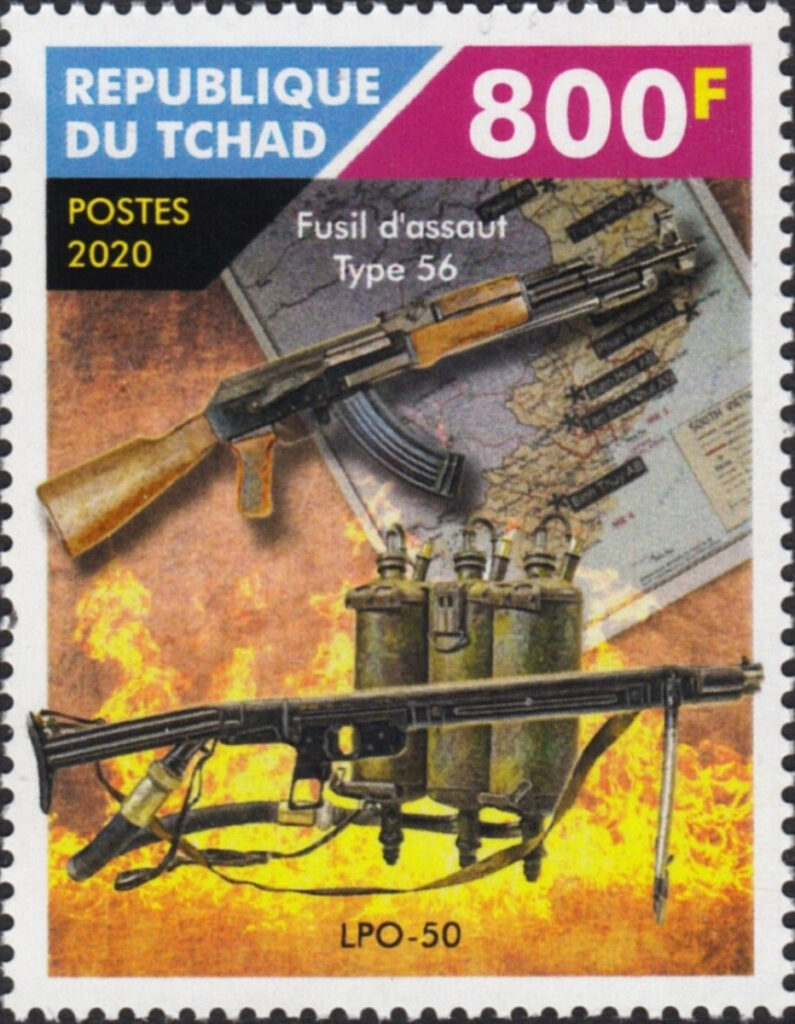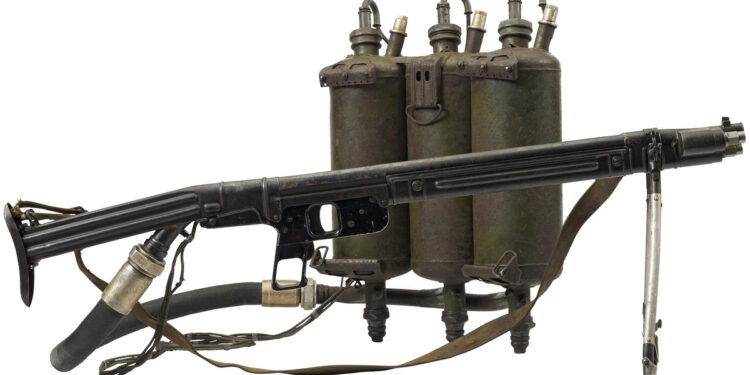In the early 1950s, the Soviet Army experimented with replacement models for the aging wartime ROKS flamethrowers. The LPO-50 model was eventually put into service and was used not only in the Soviet Union but also in friendly countries around the world.
During the war, the Red Army used the ROKS-2 for the first time in the fight against the Finns. Later it was also used on the other fronts. This flamethrower was disguised as a rifle, the lance embedded in the converted wooden stock of a Mosin-Nagant rifle, with original sling and with ignition by pulling the trigger. For the firing method, the Soviets used special primers made from standard 7.62x25mm cartridge cases. The two incendiary tanks on the back carrier were boxed with sheet metal to simulate a rucksack. The bottle with the propellant hung crosswise under the box.
When filled, the ROKS-2 weighed about 23kg (50lb) and required two men to operate. Towards the end of the war, smaller quantities of the simplified ROKS-3, on which the tanks were no longer covered, were sent to the front. Although both models had proven to be quite reliable in action, after the war the military leadership demanded an easier-to-operate model with a longer range.
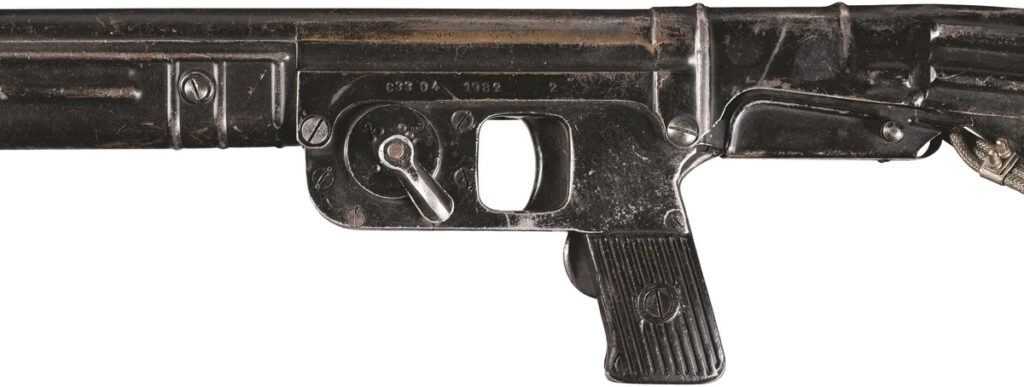
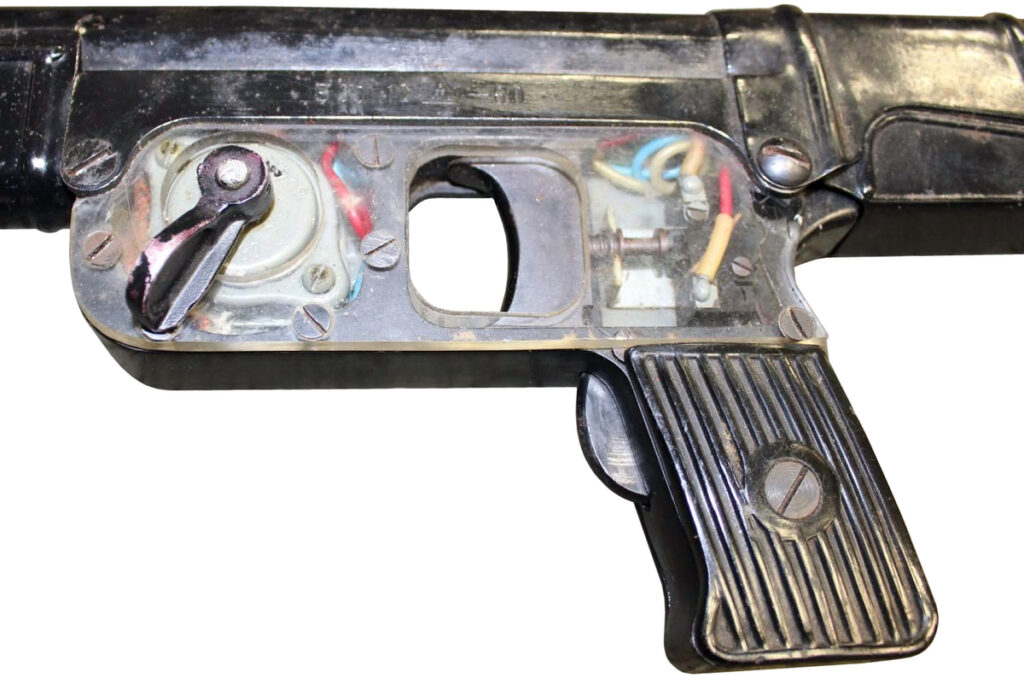
After testing and introduction as the LPO-50, the new model went into series production in the spring of 1955. LPO is the abbreviation of Lyogkiy Pyekhotnyy Ognyemyot (Легкий Пехотный Огнемет), i.e. a light infantry flamethrower. The weight itself, however, was not lightened, because the LPO-50 weighed 23kg (50lb) just like its predecessor.
Instead, the construction had changed completely. The backpack now consists of three cylindrical tanks arranged next to each other, each with a capacity of 3.5 liters (0.76 gallons). Each tank has a filler neck. A powder chamber is then inserted and screwed into each filler neck. An additional pressure relief valve per tank, non-return valves on each hose connection and a grip safety device on the front of the grip provide the necessary safety.
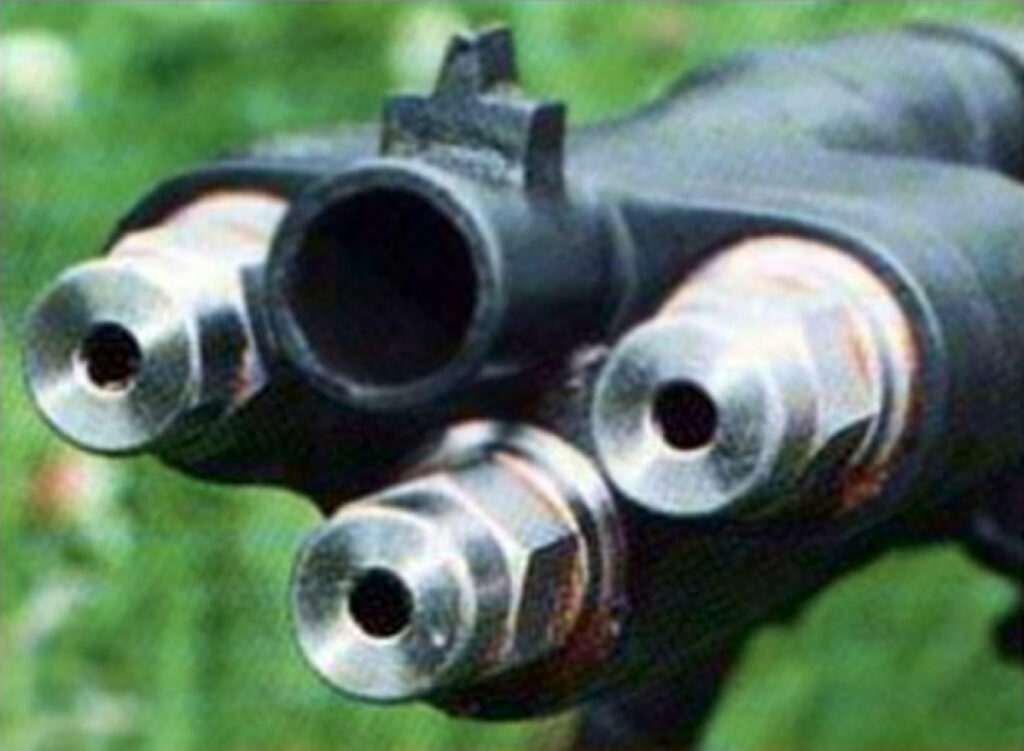
To make the LPO-50 ready for use, first insert one powder charge per tank into the powder chamber and one PP9-RO primer cartridge into the socket above each. At the bottom of each chamber there are six holes through which the gases flow into the tank after ignition and push the incendiary mixture through the hose to the lance. Underneath all three tanks is a common manifold to the hose.
The lance resembles a rifle with a stock, pistol grip and folding bipod. At 85cm (34in), it is rather long and unwieldy. On both sides and below the muzzle are three chambers for one incendiary cartridge each with PP9-RO primer. Each chamber is connected to a specific tank. The battery for the electrical control and ignition system is located in the butt. It lasts for about 600 ignitions.
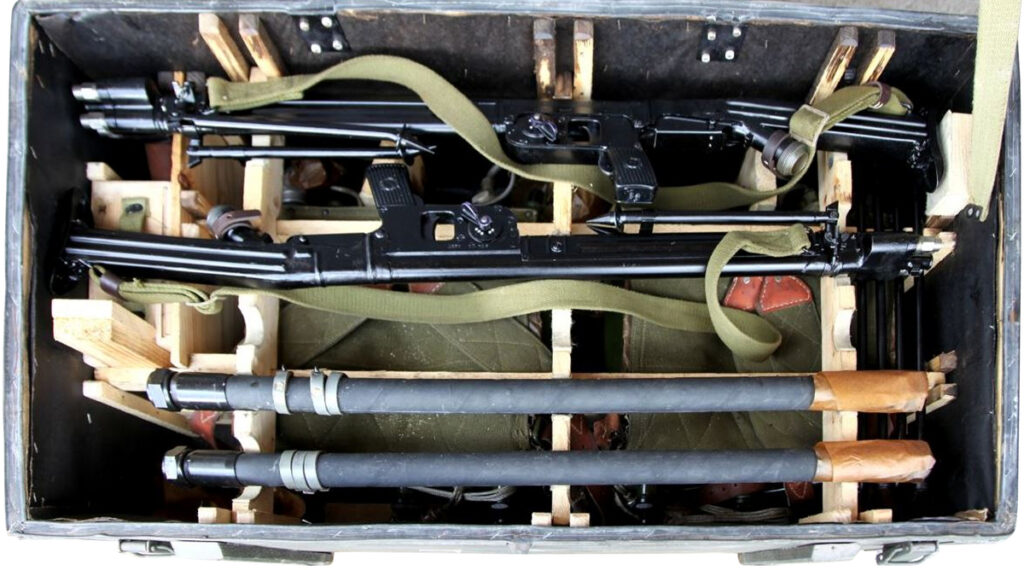
The shot is activated by pressing the trigger, which sends an electric impulse to the glow igniters of the two primers. A switch allows the operator to select the desired tank. It was thus possible to fill the tanks with different mixtures and fire them as required. The incendiary mixture ignites on the incendiary cartridge when it leaves the muzzle.
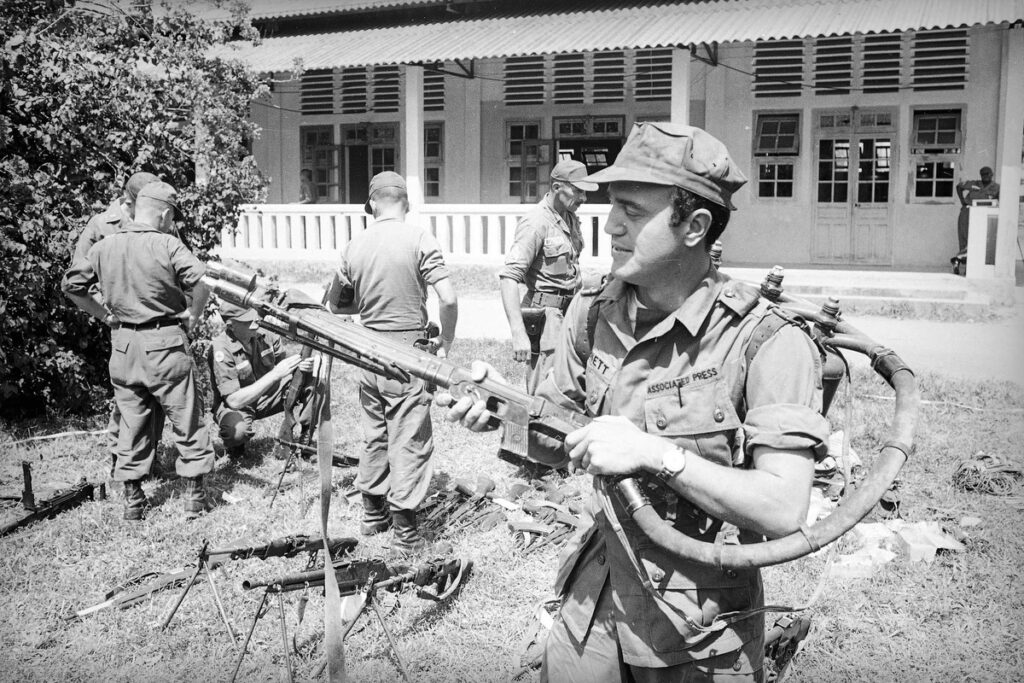
Without reloading, the flamethrower could fire three shots – one from each tank. The duration of a shot was 2-3 seconds and the range 50 to 70m (55 to 77yd), depending on the viscosity of the mixture. If there was a tailwind, even a little more. This was a very short firing time and in reports of the East German Army (NVA) this was also criticized by soldiers. They also felt that the effect on the target was insufficient.
In a combined arms engagement, the platoons and squads of flamethrower units were to be linked up with motorized rifle units. The flamethrowers then accompanied the rifle platoon or squad but had to move hidden behind it. Experience had shown that if they were discovered, they quickly drew the enemy’s fire. Only when a target could not be eliminated with the other infantry weapons were flamethrowers used. In this case, using camouflage and covering fire, they had to advance up to a distance of about 40 to 50m (44 to 55yd) from the target.
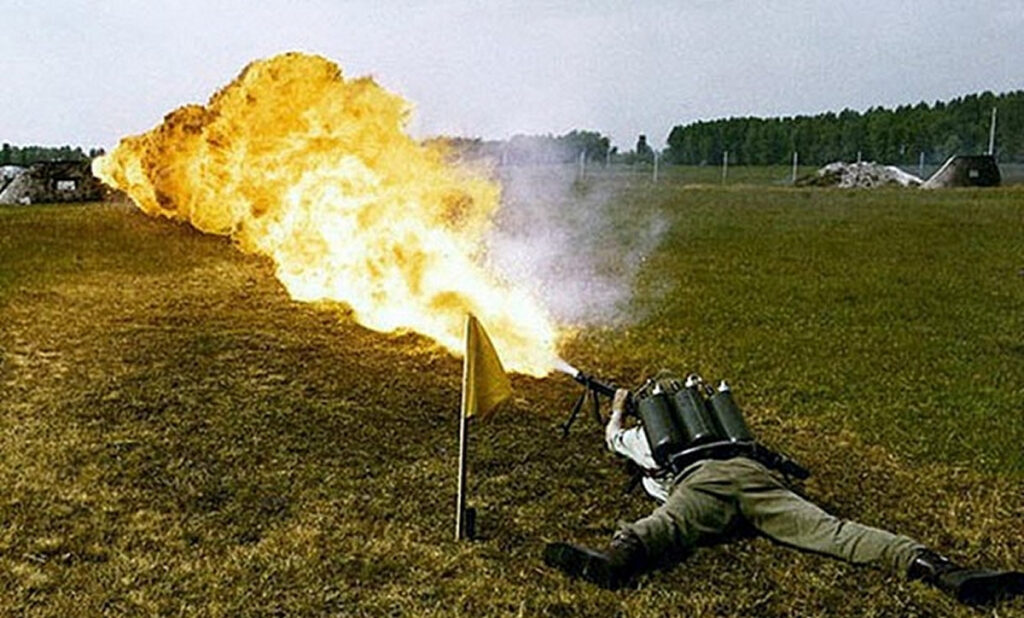
For all its advantages, the LPO-50 also had the characteristic disadvantages of a flamethrower. In a real battle, such weapons were not only dangerous for the enemy, but also for the own operating crew and the surrounding comrades. For this reason, the military was also looking for alternative ways to increase the infantry’s firepower.
And so, at the beginning of 1975, they introduced the new type of infantry rocket launcher, the RPO “Rys”. It could be carried and operated by one man, weighed only 3.5kg (7,7lb) empty, fired rockets filled with 4 liters (0.9 gallons) of napalm up to 200 meters (220 yards) away and could be reloaded. The LPO-50 thus became obsolete and was gradually taken out of service, stored and in some cases passed on to friendly countries.
In the 1950s, the Soviet Union and the People’s Republic of China intensified their cooperation in military and weapons technology. China showed great interest in the new flamethrower and even acquired the rights to manufacture it under license in their own country. They only changed a few minor details in the production process, otherwise their Type 58 corresponded to the Russian model. A longer series of tests was carried out with different incendiary mixtures.
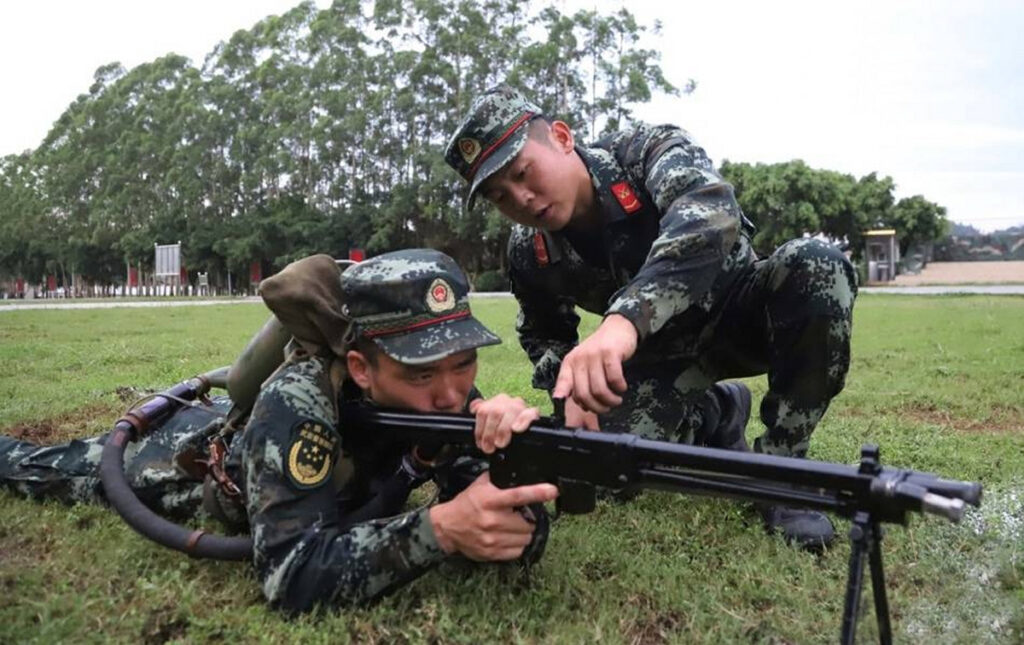
Based on the experience gained, China developed a modernized version in the 1970s. This Type 74 had an improved lance with only two incendiary cartridge chambers, as well as only two tanks. Overall, the flamethrower became somewhat lighter, although the capacity of the two tanks was increased to 4 liters (0.9 gallons) each. The Type 74 is still in active service today and is regularly and impressively staged for the press photographers during various exercises and demonstrations.
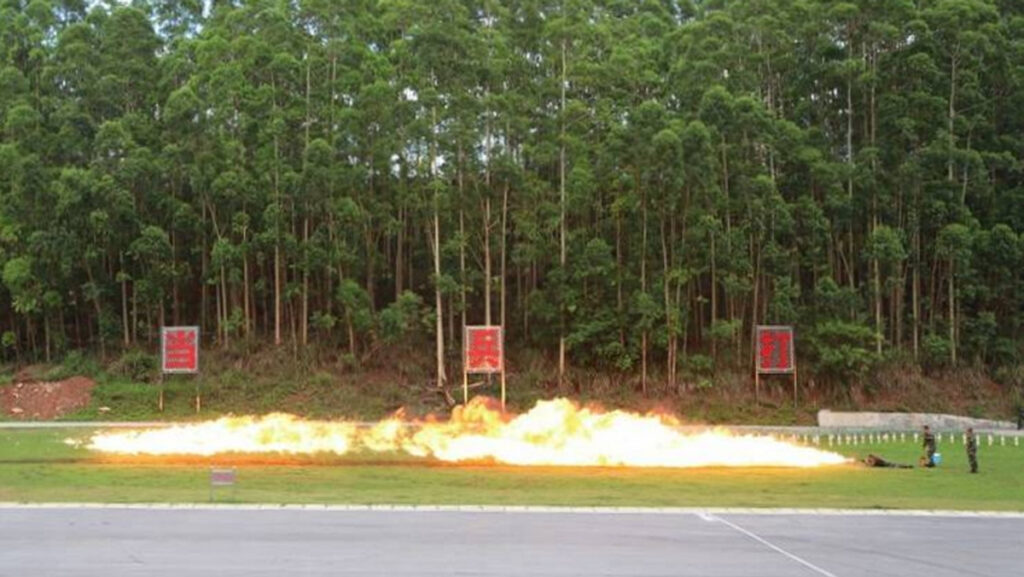
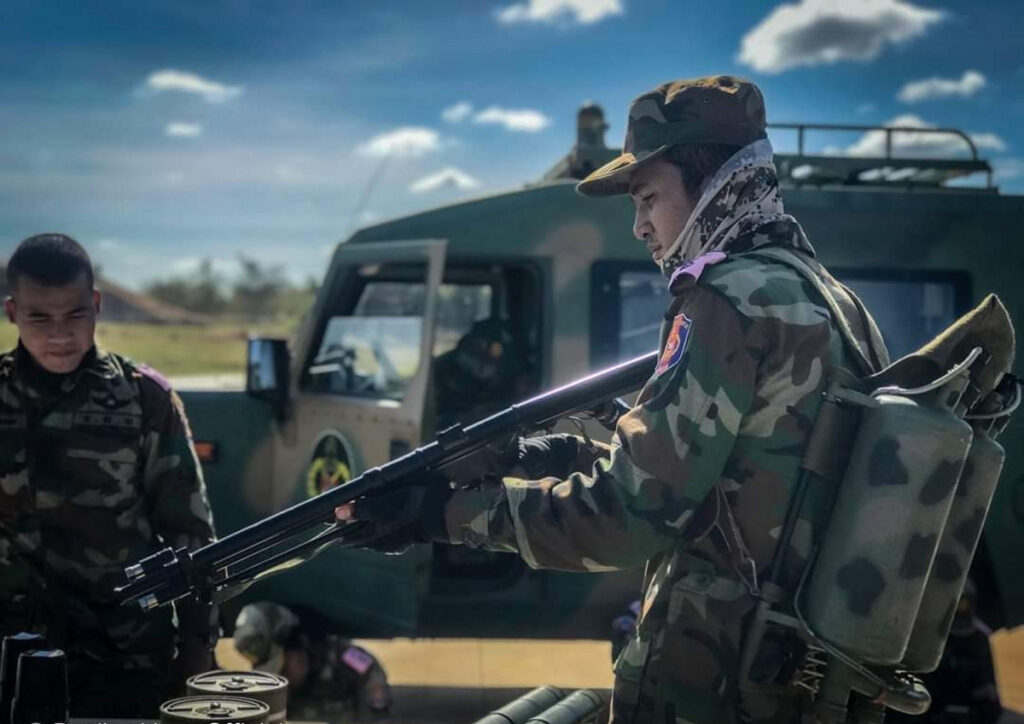
Apart from China, only one independent production in Romania is known to date. All other Warsaw Pact countries received their LPO-50s from Russian production. Some of the decommissioned ROK old stocks were also passed on to friendly states. The German Democratic Republic acquired larger quantities and used them in the NVA forces as the ‘Light Flamethrower LPO-50’. The earliest known service record dates back to 1966. Flamethrowers from Soviet and Chinese production were also used in Vietnam. However, their active use was limited because the required quantities of flammable liquids were often not available at the front.
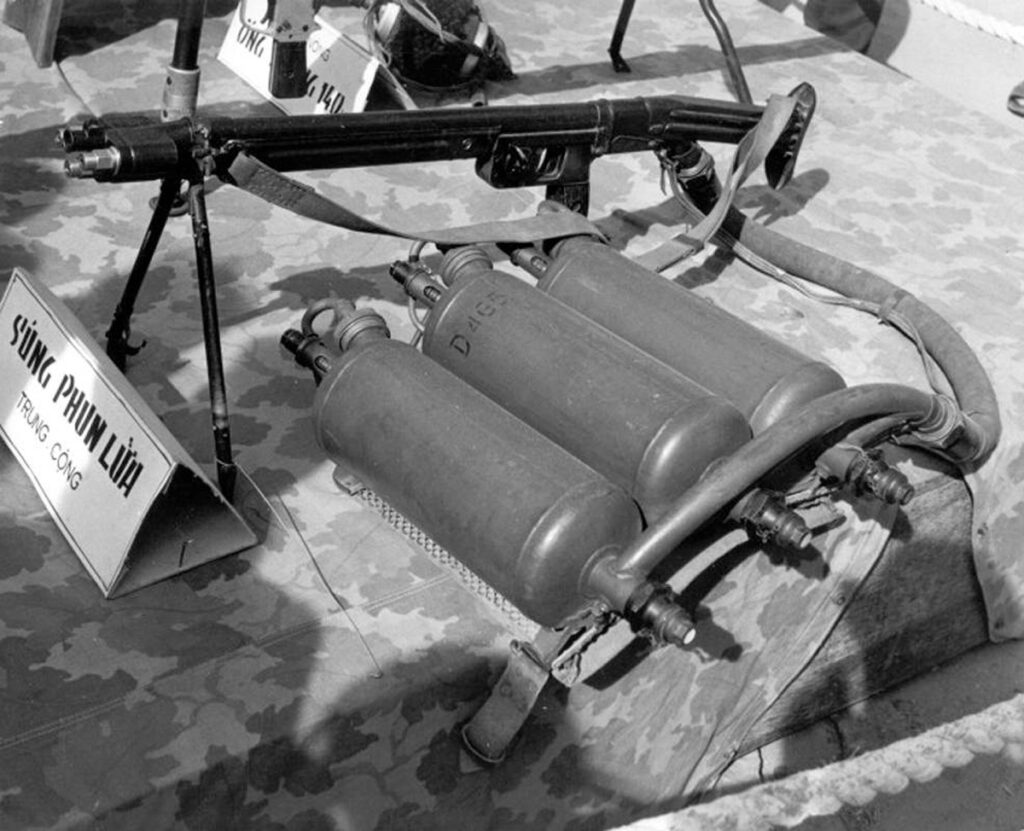
Of course, the worldwide distribution also led to devices disappearing into dark channels time and again. When the Irish Republican Army (IRA) attacked the Derryard vehicle checkpoint on 13 December 1989, an LPO-50 flamethrower was also present. British units subsequently recovered at least six Russian-made units. How and where they came from is still unknown.
